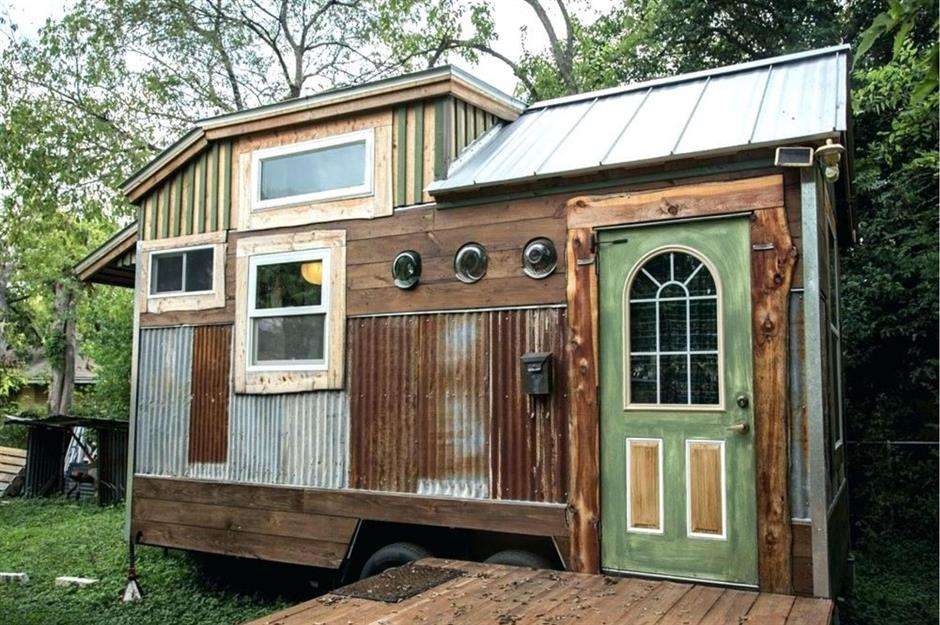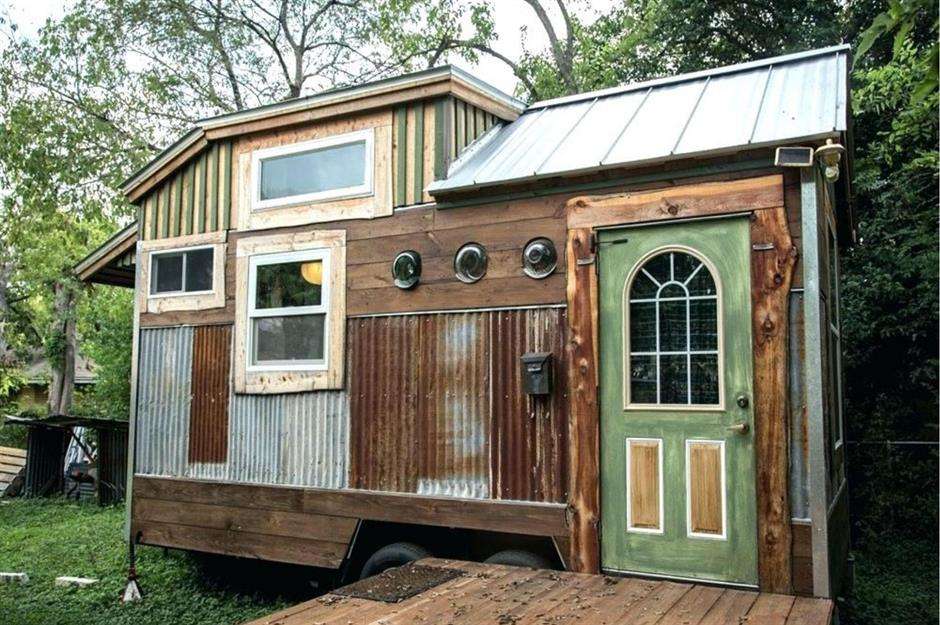I’ve always been fascinated by the idea of living in a tiny home – a cozy space that is not only environmentally friendly but also promotes a minimalist lifestyle. But what if you could take it a step further and build your tiny home using recycled materials? In this article, I’ll guide you through the process of building a tiny home with recycled materials, from sourcing the materials to constructing your dream sustainable abode. Get ready to unleash your creativity and make a positive impact on the planet, one recycled material at a time.
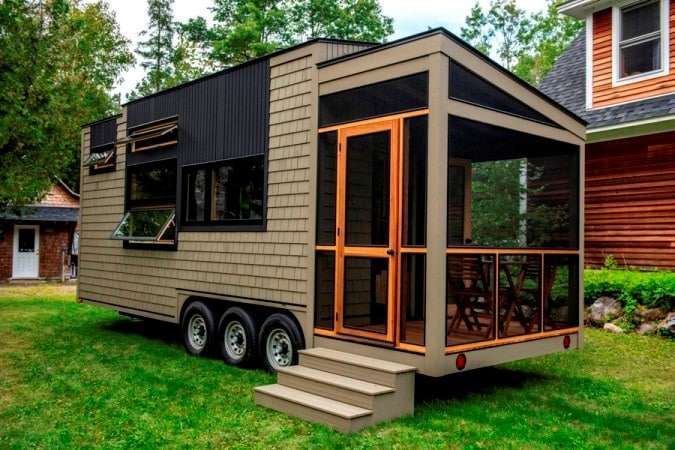
Understanding the Concept of a Tiny Home
The minimalist lifestyle
In recent years, the popularity of tiny homes has soared, driven by a desire for a simpler and more sustainable way of living. Embracing the minimalist lifestyle, tiny homes offer a unique opportunity to downsize and prioritize what truly matters. By living in a smaller space, individuals can minimize their environmental footprint, reduce their expenses, and declutter their lives.
Benefits of a tiny home
Tiny homes come with a plethora of benefits, making them an attractive option for many individuals. First and foremost, the cost of building and maintaining a tiny home is significantly lower than that of a traditional house. With fewer square footage and materials needed, the financial burden is greatly reduced. Additionally, the smaller size encourages a more sustainable and eco-friendly lifestyle. By using recycled materials, minimizing energy consumption, and adopting renewable energy sources, tiny homes can have a minimal impact on the environment. Furthermore, the compact nature of tiny homes allows for greater mobility and freedom. Those who choose to live in a tiny home can easily relocate and explore various locations, allowing for a sense of adventure and a chance to connect with nature.
Legalities and regulations of building a tiny home
Before embarking on the journey of building a tiny home, it is essential to familiarize yourself with the local laws and regulations. Building codes and zoning restrictions vary depending on the jurisdiction, and it is crucial to adhere to these guidelines to ensure a smooth and lawful construction process. Consulting with local authorities and seeking the necessary permits will help avoid any legal complications in the future. Additionally, it may be beneficial to join tiny home communities or associations to connect with like-minded individuals who can provide guidance and support throughout the building process.
Planning your Tiny Home
Identifying your needs and requirements
The first step in planning your tiny home is identifying your specific needs and requirements. Consider the size of your family, your lifestyle, and any unique circumstances that may impact the design and layout of your tiny home. Will you need space for a home office, a fitness area, or storage for outdoor equipment? Understanding your priorities will ensure that your tiny home is tailored to your individual needs.
Designing the layout
Once you have identified your needs, the next step is to design the layout of your tiny home. In a limited space, efficient utilization is crucial. Consider incorporating multi-purpose furniture, such as foldable tables and convertible seating, to maximize functionality. Additionally, carefully plan the placement of windows and doors to optimize natural light and ventilation. Utilize vertical space with lofted sleeping areas or storage solutions. With proper planning, you can create a tiny home that feels spacious and comfortable.
Choosing an appropriate location
Selecting the right location for your tiny home is essential. Research local regulations and zoning restrictions to determine where tiny homes are allowed to be parked or situated. Additionally, consider factors such as access to amenities, proximity to work or schools, and the overall environment. Whether you choose to be nestled amid nature or located within a tiny home community, ensure that your chosen location aligns with your lifestyle and preferences.
Sourcing Recycled Materials
Finding recycled materials
Sourcing recycled materials is a crucial aspect of building a sustainable tiny home. Start by exploring local salvage yards, construction sites, and online marketplaces specifically designed for recycled materials. Often, these sources offer a wide range of materials, including reclaimed wood, salvaged windows, and used appliances. Additionally, connect with local homeowners who are renovating or demolishing their homes, as they may have materials to give away or sell at a lower cost.
Inspection and quality check of recycled materials
When sourcing recycled materials, it is essential to thoroughly inspect and quality-check each item. Ensure that the materials are in good condition, free from any damage or decay. Verify that windows and doors are properly functioning and that electrical appliances are in working order. Conducting thorough inspections will help avoid any unnecessary expenses or setbacks during the construction process.
The importance of sustainable and eco-friendly building materials
Incorporating sustainable and eco-friendly building materials in your tiny home is not only environmentally responsible but can also enhance the overall quality of your living space. Opt for materials that have been responsibly sourced, such as reclaimed wood or bamboo flooring. These materials not only add character to your home but also help reduce deforestation and carbon emissions. Consider using low VOC (volatile organic compounds) paint and sealants, which minimize harmful off-gassing and promote indoor air quality. By consciously selecting materials, you can create a healthy and eco-conscious living environment.
The Foundation
Types of foundations suitable for tiny homes
When it comes to the foundation of your tiny home, several options are suitable depending on your location and personal preferences. The most common types include a concrete slab foundation, a pier foundation, or a trailer foundation. Each has its advantages and considerations, so it is important to research and choose the most appropriate option for your specific circumstances.
Creating a strong foundation using recycled materials
In the spirit of sustainability, consider using recycled materials to create a strong foundation for your tiny home. Concrete blocks made from recycled aggregate or reclaimed bricks can serve as a sturdy base. By repurposing materials, you reduce waste and give new life to old resources. Additionally, utilizing recycled materials can also provide cost savings, making it an attractive option for those on a budget.
Weather-proofing techniques for your tiny home’s foundation
To ensure the longevity and durability of your tiny home, implementing proper weather-proofing techniques is crucial. Apply a waterproof sealant to the foundation to prevent water damage and moisture infiltration. Install proper drainage systems, such as gutters and downspouts, to direct water away from the foundation. Consider using insulation materials to regulate temperature and minimize heat loss. By taking these steps, you can protect your tiny home from the elements and ensure a comfortable living environment.

The Frame
Building the structure or skeleton of the home
The frame of your tiny home provides the structural integrity and support for the entire building. Depending on your chosen design, you can opt for traditional stick framing or newer techniques, such as steel frame or SIPs (structural insulated panels). Careful planning and precise measurements are crucial at this stage to ensure that the frame is sturdy and in line with your design specifications.
Choosing the right recycled materials for the frame
When it comes to selecting materials for the frame of your tiny home, consider recycled options such as reclaimed lumber or steel. Reclaimed lumber adds a rustic and unique touch to your home, while steel offers strength and durability. Be sure to carefully inspect recycled materials for any structural compromises or damage, as the frame is a critical component of your tiny home’s integrity.
Considerations for stability and longevity
In any construction project, stability and longevity are of utmost importance. When building a tiny home, factors such as wind resistance and seismic activity should be considered to ensure the structural integrity of the frame. Working with a knowledgeable architect or builder can help navigate these considerations and ensure that your tiny home stands strong for years to come.
Putting up the Walls and Ceiling
Selecting suitable materials for the walls and ceiling
When it comes to the walls and ceiling of your tiny home, the options are vast. Consider using recycled materials such as reclaimed wood, salvaged metal, or repurposed shipping containers. These materials not only add character and charm but also align with the sustainable principles of a tiny home lifestyle. Additionally, explore alternative options such as straw bale or hempcrete, which provide excellent insulation properties. Selecting suitable materials for the walls and ceiling is an opportunity to express your creativity while maintaining a sustainable approach.
Insulation techniques with recycled materials
Insulating your tiny home is crucial for energy efficiency and year-round comfort. Recycled insulation materials, such as denim insulation made from recycled jeans or cellulose insulation made from recycled paper, offer excellent thermal properties and reduce waste. Properly insulating your walls and ceiling will help regulate temperatures and minimize energy consumption, providing a comfortable living environment.
Painting or finishing the walls and ceiling
Once the walls and ceiling are in place and properly insulated, it’s time to give your tiny home a finishing touch. Consider using low VOC paints and finishes to minimize off-gassing and promote indoor air quality. Embrace your personal style and choose colors and finishes that reflect your unique taste. Whether you prefer a rustic, industrial, or modern look, the walls and ceiling offer a canvas to showcase your individuality.
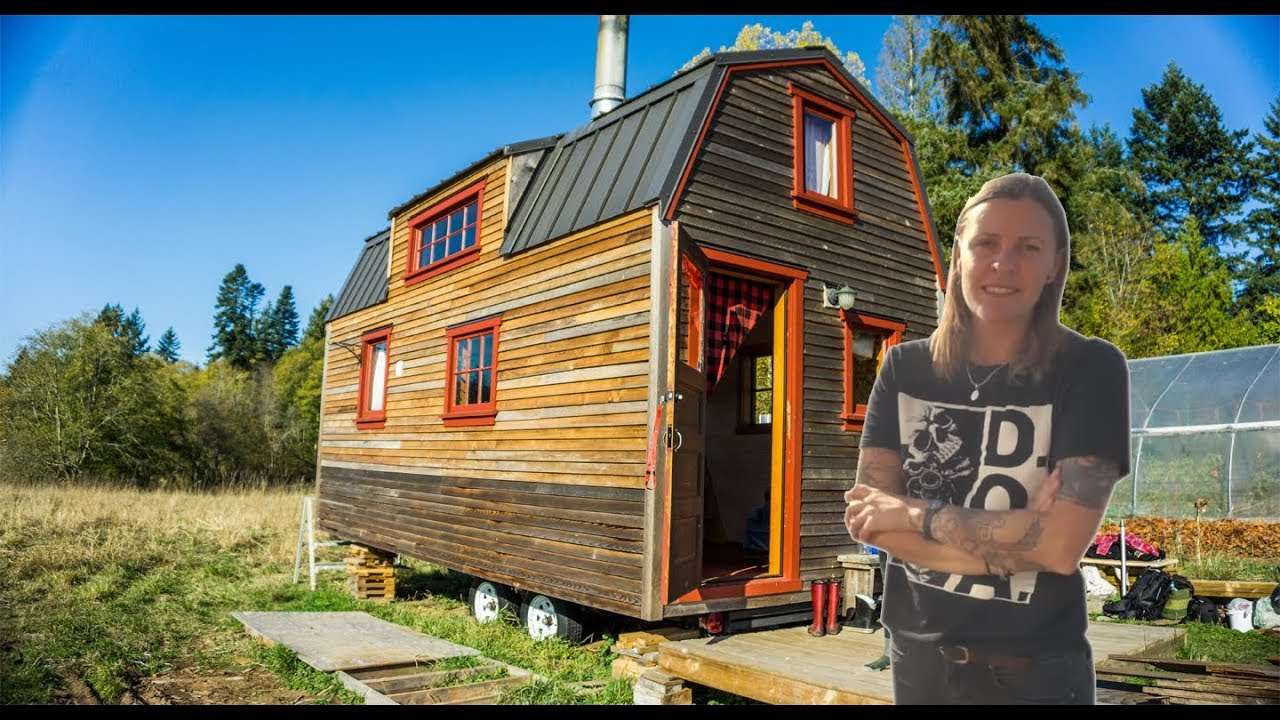
Flooring and Roofing
Various recycled materials for flooring
When it comes to selecting flooring materials for your tiny home, there are numerous recycled options available. Reclaimed wood flooring adds warmth and character, while cork flooring provides excellent insulation and sound absorption. Recycled rubber or vinyl tiles offer durability and easy maintenance. Whichever option you choose, ensure that it aligns with your aesthetic preferences, budget, and environmental values.
Building a durable and weatherproof roof
The roof of your tiny home plays a crucial role in protecting the interior from the elements. Consider using recycled metal roofing, which offers longevity, durability, and sustainability. Metal roofs are resistant to fire, wind, and pests, making them an ideal choice for a tiny home. Pay close attention to proper installation techniques to ensure weatherproofing and a tight seal.
Installation of flooring and roofing with recycled materials
When installing flooring and roofing with recycled materials, attention to detail is essential. Proper adhesives, sealants, and installation techniques should be employed to ensure durability and longevity. Additionally, consult with professionals or experienced builders to ensure that the materials are installed correctly and according to industry standards. With proper installation, your recycled flooring and roofing will provide years of comfort and protection.
Incorporating Energy-Efficient Systems
Using recycled materials for heating and cooling
Heating and cooling a tiny home efficiently is crucial for maintaining a comfortable and sustainable living environment. Consider using recycled materials for heating and cooling systems, such as salvaged wood stoves or refurbished HVAC units. These systems not only reduce waste but can also provide cost savings in the long run. Additionally, explore alternative options such as radiant floor heating or passive cooling techniques to minimize energy consumption and maximize efficiency.
Solar panels and renewable energy sources
Embracing renewable energy sources is one of the cornerstones of sustainable living in a tiny home. Installing solar panels on the roof of your tiny home allows you to harness the power of the sun and reduce reliance on conventional energy sources. Additionally, consider incorporating wind turbines or hydropower systems if suitable for your location. By leveraging these renewable energy sources, you can significantly reduce your carbon footprint and live more sustainably.
Water conservation and management strategies
Conserving and managing water resources is a vital aspect of sustainable living in a tiny home. Consider installing a rainwater harvesting system to collect and reuse water for various purposes, such as irrigation or toilet flushing. Utilize low-flow fixtures and appliances to minimize water usage. Graywater systems can divert and treat wastewater for non-potable use, further reducing water consumption. By implementing these strategies, you can make the most out of limited water resources and live in harmony with the environment.
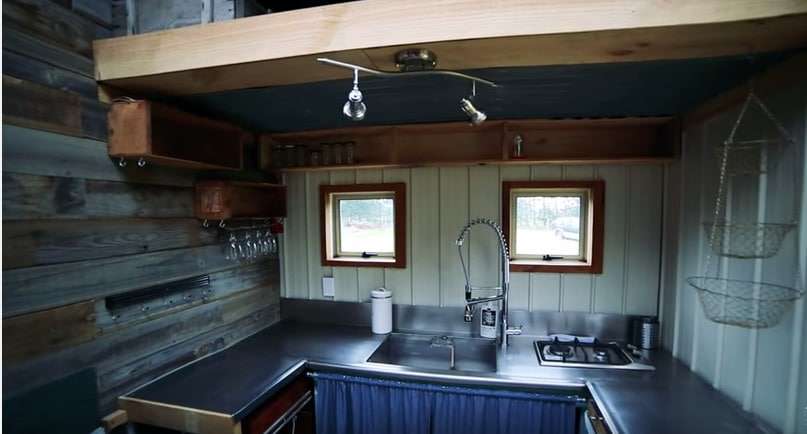
Adding the Finishing Touches
Creating interior spaces with recycled materials
Incorporating recycled materials into the interior of your tiny home adds a unique touch and promotes sustainability. Consider using salvaged wood for cabinetry, reclaimed doors for dividers, or repurposed materials for shelving and storage solutions. These recycled elements not only contribute to the overall aesthetic but also provide an opportunity to repurpose resources and reduce waste. Get creative and think of innovative ways to incorporate recycled materials into your interior design.
Incorporating recycled furniture
Furnishing your tiny home with recycled furniture enhances the sustainability of your living space. Seek out second-hand stores, flea markets, or online platforms that specialize in pre-loved furniture. Refurbish or upholster existing pieces to give them new life. Opt for furniture made from sustainable materials, such as bamboo or reclaimed wood. By choosing recycled furniture, you contribute to the circular economy and reduce the demand for new resources.
The role of natural light and windows
Natural light plays a pivotal role in creating an inviting and positive living environment. In a tiny home, the strategic placement of windows can greatly enhance the sense of space and openness. Consider installing large windows or skylights to maximize natural light. Additionally, invest in window treatments that allow flexibility in privacy and light control. Harnessing natural light not only reduces the need for artificial lighting but also promotes a connection with the outdoors, fostering a sense of well-being.
Maintaining your Tiny Home
Simple maintenance tips
Keeping your tiny home in good condition requires regular maintenance and care. Develop a maintenance schedule and follow it diligently, checking for any signs of wear and tear. Simple tasks such as cleaning gutters, lubricating hinges, and sealing gaps can prevent costly repairs in the future. Regularly inspect the exterior for any weathering or damage that may compromise the integrity of your tiny home. By staying proactive, you can preserve the longevity and quality of your sustainable living space.
Periodic checks for wear and tear
Periodic checks are essential to identify and address any wear and tear in your tiny home. Regularly inspect the interior and exterior for signs of moisture intrusion, insect damage, or structural compromises. Pay close attention to the roofing, windows, and doors, which are vulnerable areas. By catching and addressing issues early on, you can prevent further damage and ensure a safe and secure living environment.
Lifespan of recycled materials and when to replace them
Recycled materials, just like any other building materials, have a lifespan. While reclaimed materials can often offer durability and longevity, it is important to assess their condition periodically. Pay attention to signs of decay, warping, or compromised structural integrity. Should any materials reach the end of their lifespan, it is crucial to replace them promptly to maintain the overall integrity of your tiny home. Regular inspections and consultations with professionals can help determine the lifespan of recycled materials and guide you in making necessary replacements.
In conclusion, building a tiny home with recycled materials is a rewarding and sustainable endeavor. By understanding the concept of a tiny home, planning your design, sourcing recycled materials, and employing energy-efficient systems, you can create a comfortable and eco-conscious living space. While maintaining your tiny home requires consistent care and periodic checks, the benefits of a sustainable tiny home make the effort worthwhile. Embrace the minimalist lifestyle, reduce your environmental footprint, and enjoy the freedom and flexibility that a tiny home offers.
